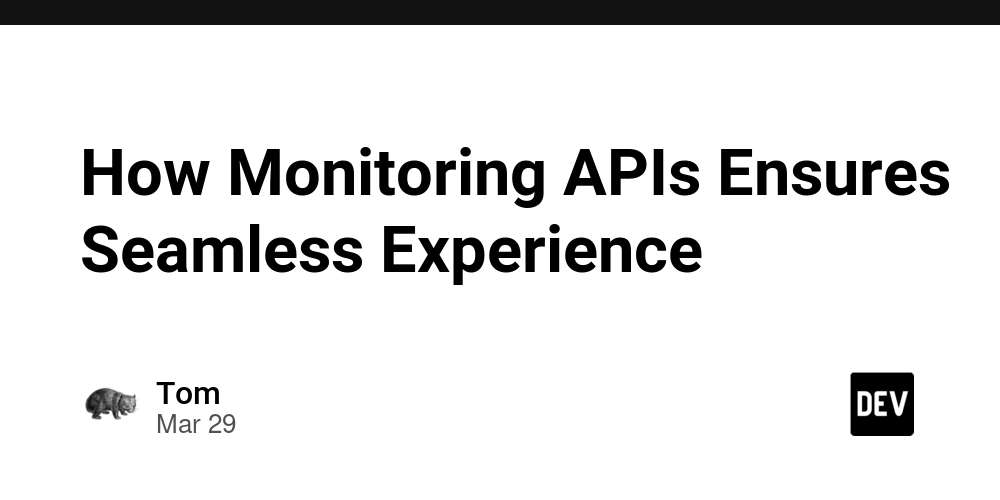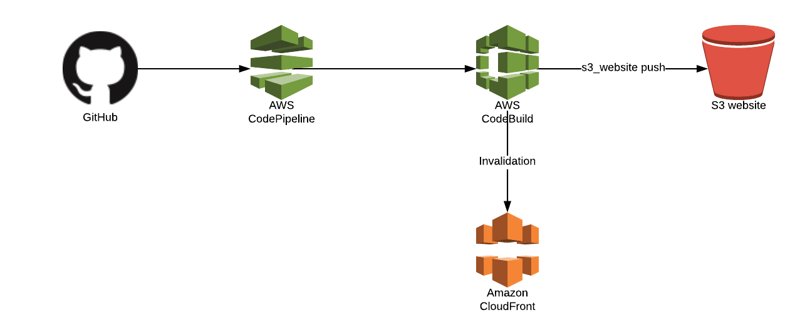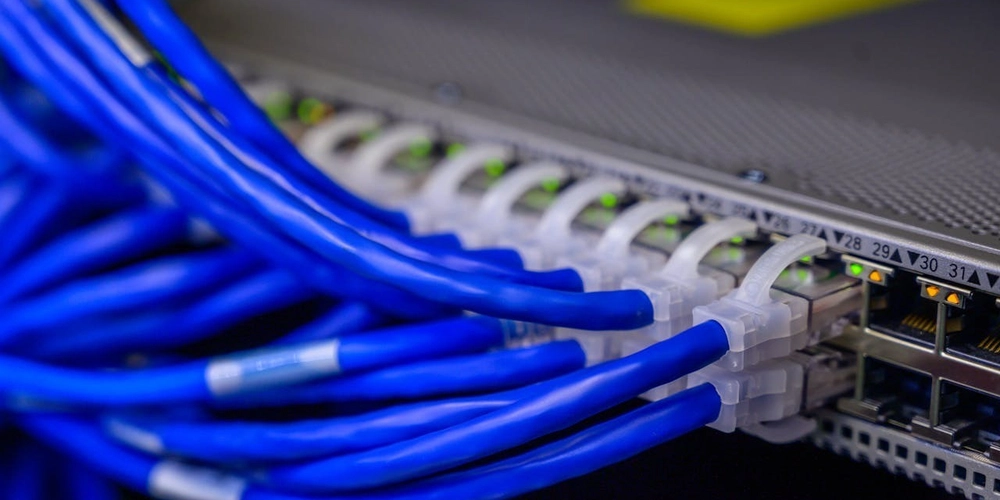How Monitoring APIs Ensures Seamless Experience
If you've ever muttered curses at your screen when a third-party API fails during a demo or watched in horror as your payment gateway went down on a peak sales day, this post is for you. APIs and web services are the invisible backbone of modern applications. When they work, nobody notices. When they fail... everyone notices. Let's look at what effective API monitoring actually means for your applications, your users, and your sanity. The Hidden Complexity of Modern Applications Modern applications are less like monoliths and more like orchestras - multiple components playing together to create the full experience: ┌─────────────────┐ ┌─────────────────┐ ┌─────────────────┐ │ Your App │────▶│ Payment API │────▶│ Banking System │ └─────────────────┘ └─────────────────┘ └─────────────────┘ │ │ │ ▼ ▼ ▼ ┌─────────────────┐ ┌─────────────────┐ ┌─────────────────┐ │ Auth Service │ │ Shipping API │ │ Tax System │ └─────────────────┘ └─────────────────┘ └─────────────────┘ Each of these connections represents a potential point of failure. The more complex your application, the more critical API monitoring becomes. Here's what typical applications depend on: Conferencing Platforms WebRTC signaling services Media streaming servers Participant management APIs Chat and file-sharing services E-commerce Platforms Payment processing APIs Inventory management services Shipping carrier integrations Tax calculation services SaaS Applications Authentication providers Database synchronization Third-party integrations Notification services The Real Cost of API Downtime When APIs fail, the impact goes far beyond simple technical issues: Immediate User Experience Impact User Story: Payment API Failure 1. Customer fills shopping cart with $30 of products 2. Customer enters all shipping and payment details 3. Customer clicks "Complete Purchase" 4. Payment API timeout occurs 5. Customer sees generic error 6. Customer tries again... same error 7. Customer abandons cart and buys from competitor Operational Consequences For you and your team, API failures create: Unplanned work interruptions Resource-intensive troubleshooting Difficulty determining if the issue is in your code or the third-party service Stressful stakeholder communications The Monitoring Solution: Beyond Simple Pings Effective API monitoring goes far beyond checking if an endpoint returns a 200 status code: 1. Functional Testing Verify that APIs not only respond but work correctly: # Instead of just checking if the endpoint is up curl -s https://api.example.com/health | grep "OK" # Test actual functionality TEST_ORDER=$(curl -s -X POST https://api.example.com/orders \ -d '{"product_id": "test-sku", "quantity": 1}') ORDER_ID=$(echo $TEST_ORDER | jq -r '.order_id') # Verify order was created correctly curl -s https://api.example.com/orders/$ORDER_ID | jq '.status' 2. Performance Monitoring Track response times and identify trends: # PromQL query to alert on API latency increases ( rate(http_request_duration_seconds_sum{service="payment-api"}[5m]) / rate(http_request_duration_seconds_count{service="payment-api"}[5m]) ) > 0.5 3. Dependency Mapping Understand which services depend on which APIs: Service: Checkout Dependencies: - payment-gateway-api [Critical] - inventory-service-api [Critical] - shipping-calculator-api [Important] - recommendations-api [Non-critical] How Bubobot Makes API Monitoring Painless If building this monitoring infrastructure sounds like a project in itself, you're right. That's why we built Bubobot to handle the heavy lifting: 1. Fast Detection When It Matters Our monitoring checks run as frequently as every 20 seconds - giving you immediate awareness when APIs start failing. Traditional monitoring: "Is the API down? Let's check every 5 minutes" Bubobot: "Your payment API response time increased by 300% - 15 seconds ago" 2. Functional Verification Beyond simple pings, we can: Test complete API workflows Verify response payloads Authenticate and run protected endpoint tests Check for specific content or values 3. Contextual Alerting No more alert fatigue with smarter notifications: Instead of: "ALERT: api.example.com returned HTTP 500" You get: "CRITICAL: Payment API failure - 40 transactions affected in last 5 min. Began 4:32 PM, coinciding with latest deployment. Latency rose gradually starting 4:28 PM before complete failure." Getting Started with API Monitoring Whether you use Bubobot or build your own solution, here's a practical approach to start monitoring your critical APIs: Map your depend

If you've ever muttered curses at your screen when a third-party API fails during a demo or watched in horror as your payment gateway went down on a peak sales day, this post is for you.
APIs and web services are the invisible backbone of modern applications. When they work, nobody notices. When they fail... everyone notices.
Let's look at what effective API monitoring actually means for your applications, your users, and your sanity.
The Hidden Complexity of Modern Applications
Modern applications are less like monoliths and more like orchestras - multiple components playing together to create the full experience:
┌─────────────────┐ ┌─────────────────┐ ┌─────────────────┐
│ Your App │────▶│ Payment API │────▶│ Banking System │
└─────────────────┘ └─────────────────┘ └─────────────────┘
│ │ │
▼ ▼ ▼
┌─────────────────┐ ┌─────────────────┐ ┌─────────────────┐
│ Auth Service │ │ Shipping API │ │ Tax System │
└─────────────────┘ └─────────────────┘ └─────────────────┘
Each of these connections represents a potential point of failure. The more complex your application, the more critical API monitoring becomes.
Here's what typical applications depend on:
Conferencing Platforms
WebRTC signaling services
Media streaming servers
Participant management APIs
Chat and file-sharing services
E-commerce Platforms
Payment processing APIs
Inventory management services
Shipping carrier integrations
Tax calculation services
SaaS Applications
Authentication providers
Database synchronization
Third-party integrations
Notification services
The Real Cost of API Downtime
When APIs fail, the impact goes far beyond simple technical issues:
Immediate User Experience Impact
User Story: Payment API Failure
1. Customer fills shopping cart with $30 of products
2. Customer enters all shipping and payment details
3. Customer clicks "Complete Purchase"
4. Payment API timeout occurs
5. Customer sees generic error
6. Customer tries again... same error
7. Customer abandons cart and buys from competitor
Operational Consequences
For you and your team, API failures create:
Unplanned work interruptions
Resource-intensive troubleshooting
Difficulty determining if the issue is in your code or the third-party service
Stressful stakeholder communications
The Monitoring Solution: Beyond Simple Pings
Effective API monitoring goes far beyond checking if an endpoint returns a 200 status code:
1. Functional Testing
Verify that APIs not only respond but work correctly:
# Instead of just checking if the endpoint is up
curl -s https://api.example.com/health | grep "OK"
# Test actual functionality
TEST_ORDER=$(curl -s -X POST https://api.example.com/orders \
-d '{"product_id": "test-sku", "quantity": 1}')
ORDER_ID=$(echo $TEST_ORDER | jq -r '.order_id')
# Verify order was created correctly
curl -s https://api.example.com/orders/$ORDER_ID | jq '.status'
2. Performance Monitoring
Track response times and identify trends:
# PromQL query to alert on API latency increases
(
rate(http_request_duration_seconds_sum{service="payment-api"}[5m])
/
rate(http_request_duration_seconds_count{service="payment-api"}[5m])
) > 0.5
3. Dependency Mapping
Understand which services depend on which APIs:
Service: Checkout
Dependencies:
- payment-gateway-api [Critical]
- inventory-service-api [Critical]
- shipping-calculator-api [Important]
- recommendations-api [Non-critical]
How Bubobot Makes API Monitoring Painless
If building this monitoring infrastructure sounds like a project in itself, you're right. That's why we built Bubobot to handle the heavy lifting:
1. Fast Detection When It Matters
Our monitoring checks run as frequently as every 20 seconds - giving you immediate awareness when APIs start failing.
Traditional monitoring: "Is the API down? Let's check every 5 minutes"
Bubobot: "Your payment API response time increased by 300% - 15 seconds ago"
2. Functional Verification
Beyond simple pings, we can:
Test complete API workflows
Verify response payloads
Authenticate and run protected endpoint tests
Check for specific content or values
3. Contextual Alerting
No more alert fatigue with smarter notifications:
Instead of:
"ALERT: api.example.com returned HTTP 500"
You get:
"CRITICAL: Payment API failure - 40 transactions affected in last 5 min.
Began 4:32 PM, coinciding with latest deployment.
Latency rose gradually starting 4:28 PM before complete failure."
Getting Started with API Monitoring
Whether you use Bubobot or build your own solution, here's a practical approach to start monitoring your critical APIs:
Map your dependencies: Document every external API your application relies on
Categorize by impact: Identify which APIs are truly critical vs. nice-to-have
Create functional tests: Go beyond simple pings to verify actual operation
Set appropriate check frequencies: Critical APIs need more frequent checks
Establish baselines: Know what "normal" looks like before trying to spot "abnormal"
The Bottom Line
In today's interconnected application landscape, your service is only as reliable as the APIs you depend on. Proper monitoring gives you:
Faster detection and resolution of issues
Better visibility into third-party service health
The ability to communicate proactively with users when problems arise
Data to hold API providers accountable for SLAs
The result? Happier users, less stressful on-call rotations, and more time to build features instead of firefighting.
For a deeper dive into API monitoring strategies with real-world examples, check out our comprehensive guide on the Bubobot blog.










































































































































































![[The AI Show Episode 142]: ChatGPT’s New Image Generator, Studio Ghibli Craze and Backlash, Gemini 2.5, OpenAI Academy, 4o Updates, Vibe Marketing & xAI Acquires X](https://www.marketingaiinstitute.com/hubfs/ep%20142%20cover.png)



























































































































![[FREE EBOOKS] The Kubernetes Bible, The Ultimate Linux Shell Scripting Guide & Four More Best Selling Titles](https://www.javacodegeeks.com/wp-content/uploads/2012/12/jcg-logo.jpg)



![From drop-out to software architect with Jason Lengstorf [Podcast #167]](https://cdn.hashnode.com/res/hashnode/image/upload/v1743796461357/f3d19cd7-e6f5-4d7c-8bfc-eb974bc8da68.png?#)






































































































.png?#)




.jpg?#)































_Christophe_Coat_Alamy.jpg?#)








































































































![Rapidus in Talks With Apple as It Accelerates Toward 2nm Chip Production [Report]](https://www.iclarified.com/images/news/96937/96937/96937-640.jpg)









































































































































